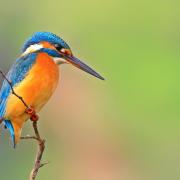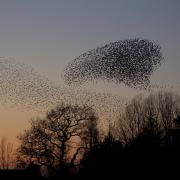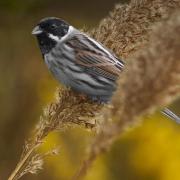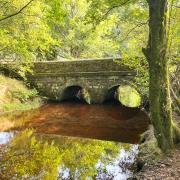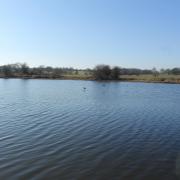Rugby league, pies and now willow tits. Is there no end to Wigan's fame, asks Alan Wright of the Wildlife Trust
A former industrial heartland is now proving to be the perfect habitat for the willow tit, a bird whose population has been devastated over the past 30 years.
Famous for heavy industry, dirt, dust and miners’ strife, the Lancashire coalfield is an environmental haven for this tiny bird threatened with extinction.
More than 10 per cent of the UK’s 5,000 willow tits live in the area around Wigan, St Helens, Warrington and Chorley. And this is critical as nationally the UK population has fallen by 90 per cent in the past 30 years placing it on the red list.
Lancashire Wildlife Trust is working to protect the habitat of these wonderful black, white and brown birds and this work centres on the wetlands which dominate the countryside around Wigan.
Its work with the council and leisure trust is making major changes to the industry scarred land much of which will help protect this bird, which is smaller than a sparrow.
The willow tit has suffered one of the largest declines of any bird species in the UK, with numbers plummeting by nearly 90 per cent between 1970 and 2011. The Wildlife Trust’s Mark Champion says: ‘The main population centre in the region is Wigan and stretches down to WoolstonEyes, adjacent to the Manchester Ship Canal in Cheshire and Yarrow Valley and Hic Bibi in Chorley. You could actually say it is based on Rugby League territories around Wigan, St Helens and Warrington.’
Mark, who has worked in Wigan for 13 years, believes there is another link between willow tits and his adopted town.
With a twinkle in his eye, he said: ‘The female birds are similar to Wigan women. They are the dominant partners in the relationship, choosing a mate and fighting off rivals. When the going gets really tough females will get their chosen males to fight each other. They really should be theofficial bird of Wigan!’
Mark admits the habitat is a problem as much improvement work in Lancashire involves planting trees and creating canopies, much loved by most other species. He said: ‘Most habitat work involves clearing scrub and planting trees like ash and oak, but willow tits do not like this. They prefer the scrub where they build there own nest hole by digging intorotten wood in the soft timber tree stumps, less than a metre from theground.
‘We really need to remember the willow tit when we are improving habitats in woodland. Of course we want to create areas for the other birds but not at the expense of a unique sub-species of bird which you will not find anywhere else In the world. We must ensure we are not contributing to another extinction – this time on our own doorsteps.’
Flash creatures
Willow tit habitat can be found by entering Wigan Flashes nature reserve at Carr Lane and walking along the path by the side of Hawkley Hall School. They return to nesting areas and use the same stumps to nest.
The birds can be seen among flocks of other tits and finches in winter but they are less inclined to join group like other tit species. Their diet includes moths, bugs, beetles and spiders, occasionally using bird feeders in winter













